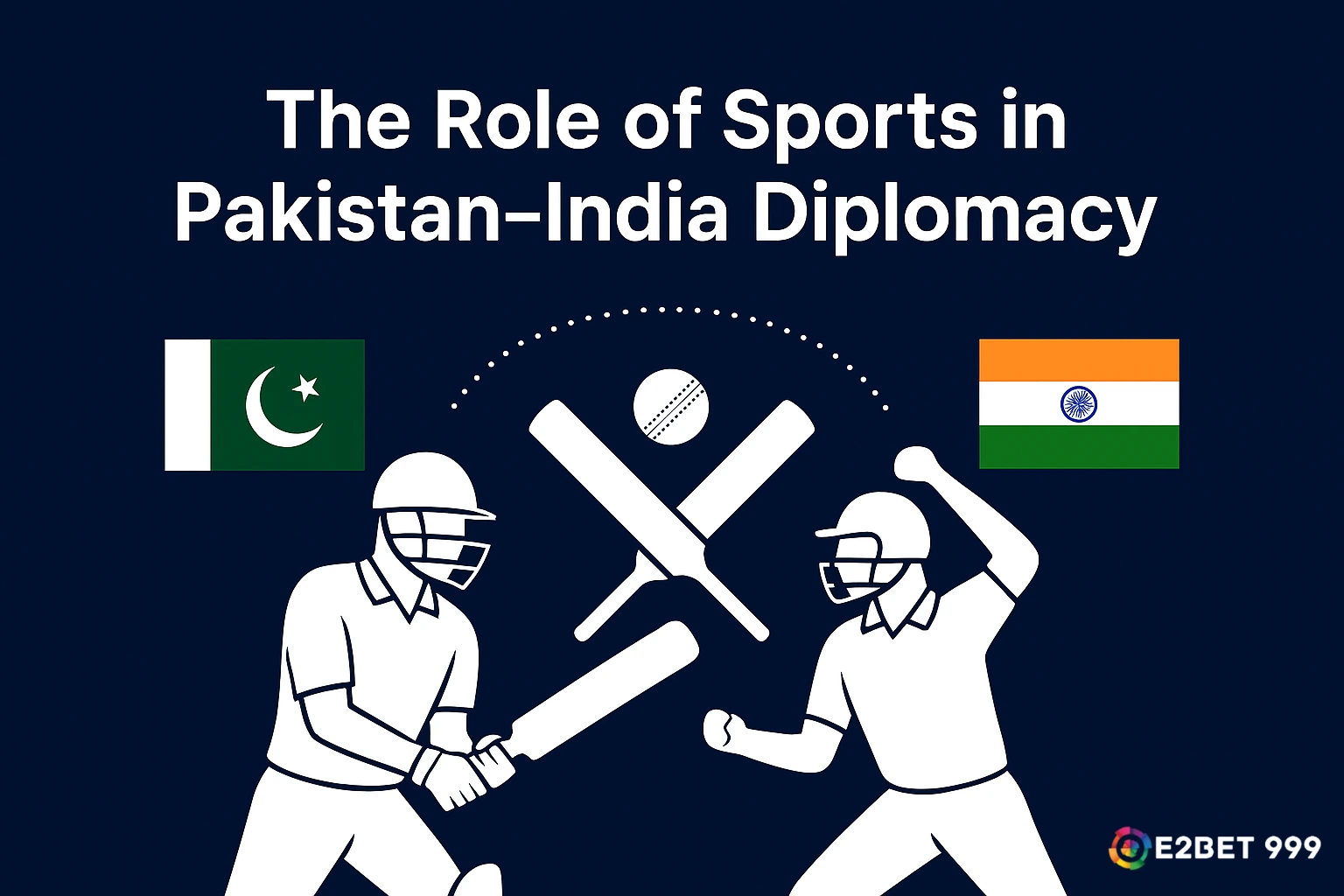What immediately comes to mind when you think of India and Pakistan? For many, it’s the decades-long political tension and conflict. However, a different connection happens on the playing field beyond the headlines and political talks. Sports, especially cricket, have long served as a unique bridge between these two nations. So, how exactly does sports influence diplomacy between Pakistan and India? Let’s dive into this fascinating world where rivalry meets respect, and competition leads to conversation.
Historical Context of Pakistan-India Sports Relations
Following their independence, Pakistan and India discovered that their relationship was complicated and influenced by their shared history and politics. Despite tensions, sports quickly emerged as a neutral ground where people could meet without politics weighing heavy on the atmosphere. The most popular sport connecting the two nations is cricket, which was introduced during British rule. From the first Test matches to heated tournaments, the cricket pitch often mirrored political climates and sometimes cooled tempers. Besides cricket, hockey and squash played important roles, although with less fanfare.
Sports as a Tool for Diplomacy
So, what is sports diplomacy? It’s the idea of using sports as a medium to foster goodwill, cultural exchange, and communication between countries. Unlike official political negotiations, sports offer a less formal and more emotionally engaging platform. When players from Pakistan and India face off, it’s not just a game—it’s an event charged with national pride, yet also an opportunity to humanize the ‘other side.’ Sports tap into shared passions and break down barriers faster than speeches or policies.

Notable Sports Events and Their Diplomatic Impact
Some matches between Pakistan and India have done more than entertain—they’ve made history. Take the 1987 cricket series, for instance, where the exchange of teams sparked a rare moment of goodwill amid tension. Cricket evolved into a purposeful diplomatic tool in the early 2000s, with “cricket diplomacy” becoming more well-known as politicians promoted matches to strengthen relations. The 2011 Cricket World Cup semi-final between the two countries was a colossal event watched by millions; it symbolized hope and unity even as political relations fluctuated. Although less frequent, hockey matches and joint sporting events also contributed by providing common ground for athletes and fans.
Challenges Faced by Sports Diplomacy
Of course, sports diplomacy isn’t without hurdles. Political conflicts often lead to cancellations or boycotts of matches, disappointing fans and athletes alike. Security concerns are constant, with fears of violence or political protests overshadowing sporting events. Media sometimes fans the flames of rivalry, focusing more on conflict than camaraderie, which can skew public perception. These challenges make sustaining sports as a diplomatic tool tricky but not impossible.
Impact on People-to-People Relations
One of sports diplomacy’s greatest strengths is its ability to connect ordinary people. Fans of both countries often share a deep love for cricket, creating informal bridges of friendship through social media, fan clubs, and cultural exchange. Sportsmanship displayed on the field helps break stereotypes and challenges negative narratives perpetuated by politics. For the youth, sports provide a positive outlet and a chance to engage with the ‘other side’ in a way politics rarely allows.
Government and NGO Involvement in Sports Diplomacy
Recognizing its potential, governments from Pakistan and India have occasionally used sports as part of their diplomatic strategies. Bilateral talks have included arrangements for cricket and hockey series. NGOs and sports federations also organize friendly matches, coaching clinics, and tournaments that bring together young athletes. These initiatives often operate beneath the political radar but play a vital role in building trust and goodwill.
Limitations and Criticism of Sports Diplomacy
While sports can open doors, some critics argue it’s only a temporary fix. Sports events may bring smiles, but without sustained political will, peace remains fragile. There’s also the risk that sports get exploited for political gains, turning genuine friendships into staged events. The key is balancing sports diplomacy with continuous and serious political dialogue to create lasting change.
The Future of Pakistan-India Sports Diplomacy
Looking ahead, sports diplomacy has fresh opportunities. New sports like badminton, football, and even e-sports offer exciting platforms for interaction. Digital media and virtual events break geographical and political barriers, allowing fans and players to connect even when physical matches are impossible. International sports bodies can also significantly encourage peaceful competition and collaboration between Pakistan and India.
Conclusion
Sports have proven to be more than just games between Pakistan and India—they are a subtle yet powerful form of diplomacy. Sports offer a unique path to understanding, respect, and peace, from shared passions to historic matches. Though challenges remain, the hope that sports inspire a better future cannot be ignored. If both nations continue embracing sports as a bridge, the potential for lasting harmony shines brighter.
FAQs
1. How has cricket influenced Pakistan-India relations?
Cricket has been a key channel for communication and goodwill, with historic matches often easing tensions and fostering people-to-people connections.
2. Can sports really improve diplomatic ties?
Yes, sports provide a less formal and emotionally engaging platform to open dialogue and break down barriers when traditional diplomacy struggles.
3. What are Pakistan and India’s main challenges in sports diplomacy?
Political conflicts, security concerns, and media sensationalism often disrupt sporting events and complicate their diplomatic impact.
4. Have other sports besides cricket played a role in diplomacy?
Yes, hockey, squash, and emerging sports like badminton have also contributed, though cricket remains the most prominent.
5. What is the two nations’ future outlook for sports diplomacy?
The future is promising with new sports, digital platforms, and increased involvement of NGOs and sports bodies fostering continuous engagement.
